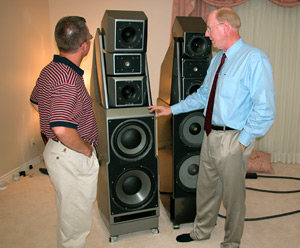This has been my experience as well. The Arrakis seems to be very adept at presenting a scale which is commensurate with the original performance and recording. I've simply never heard anything like it from a speaker that large. I always thought that my Aquilas were good in this regard, and in comparison to the other speakers in their class, and above, that I've heard they are. The Arrakis are on a completely different level.
Play a small jazz ensemble and they behave just like the best mini monitors. Play a full orchestra and they throw a stage that you can mentally walk through. Simply amazing.
I thought I was done with speakers once I got the Aquilas, but after hearing the Arrakis (and knowing that I'll likely never be able to house them) I'm seriously considering the Altairs.
Have not heard the Arrakis but have a friend who's considering the Altair ... And from his point of view (he's heard most of the uber-speakers out there) the best he's heard ...
The footprint of the Altai is exactly the same as that of the Arrakis. I would think that aside from height issues , if a room can accommodate an Altair it wil an Arrakis ... putting financials aside although, they are, not small issues by any stretch.


